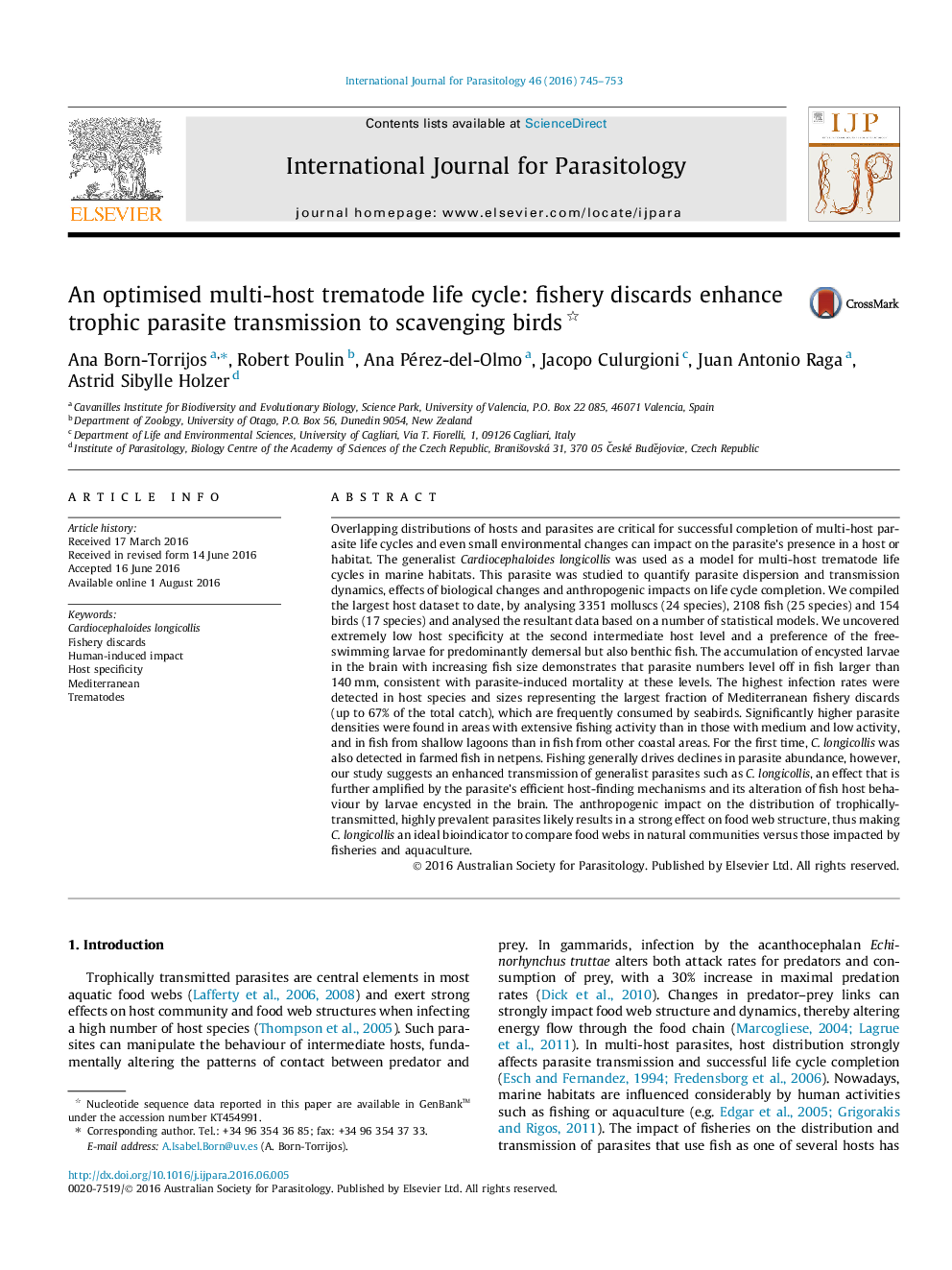| Article ID | Journal | Published Year | Pages | File Type |
|---|---|---|---|---|
| 5541354 | International Journal for Parasitology | 2016 | 9 Pages |
â¢Cardiocephaloides longicollis as a generalist parasite, multi-host life cycle model.â¢Broad host specificity in fish as second intermediate hosts.â¢Transmission is optimised by larval distribution and parasite-induced mortality.â¢Enhanced transmission to bird hosts in shallow lagoons and by fishery discards.â¢Anthropogenic impact on parasite distribution is also likely to affect food webs.
Overlapping distributions of hosts and parasites are critical for successful completion of multi-host parasite life cycles and even small environmental changes can impact on the parasite's presence in a host or habitat. The generalist Cardiocephaloides longicollis was used as a model for multi-host trematode life cycles in marine habitats. This parasite was studied to quantify parasite dispersion and transmission dynamics, effects of biological changes and anthropogenic impacts on life cycle completion. We compiled the largest host dataset to date, by analysing 3351 molluscs (24 species), 2108 fish (25 species) and 154 birds (17 species) and analysed the resultant data based on a number of statistical models. We uncovered extremely low host specificity at the second intermediate host level and a preference of the free-swimming larvae for predominantly demersal but also benthic fish. The accumulation of encysted larvae in the brain with increasing fish size demonstrates that parasite numbers level off in fish larger than 140Â mm, consistent with parasite-induced mortality at these levels. The highest infection rates were detected in host species and sizes representing the largest fraction of Mediterranean fishery discards (up to 67% of the total catch), which are frequently consumed by seabirds. Significantly higher parasite densities were found in areas with extensive fishing activity than in those with medium and low activity, and in fish from shallow lagoons than in fish from other coastal areas. For the first time, C. longicollis was also detected in farmed fish in netpens. Fishing generally drives declines in parasite abundance, however, our study suggests an enhanced transmission of generalist parasites such as C. longicollis, an effect that is further amplified by the parasite's efficient host-finding mechanisms and its alteration of fish host behaviour by larvae encysted in the brain. The anthropogenic impact on the distribution of trophically-transmitted, highly prevalent parasites likely results in a strong effect on food web structure, thus making C. longicollis an ideal bioindicator to compare food webs in natural communities versus those impacted by fisheries and aquaculture.
Graphical abstractDownload high-res image (111KB)Download full-size image
